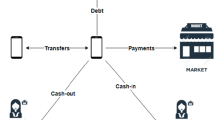Abstract
Data breaches happen daily, in too many places, result in data loss including personal, health, financial information that are crucial, sensitive, and private. The cost of the data breach is not only considered as potentially damaging to the monetary penalty, but also regarding other more severe problems such as consumer confidence, social trust and personal safety. In this paper, we brush up the world’s most significant data breaches in which amount of lost records are more than 30,000 records from 2004 to 2017. From many different aspects, the data visualization technique is used to demonstrate the fact and the hidden information of the data breach phenomenon. We also employ a case study which includes the income data of the residents in the United States and the public transportation data in New York to point out the potential risk of the data breach. Based on the case study, we once again exhibit the real dangers of data breach are out of hands. Based on the analysis and visualization, we find some interesting insights which seldom researchers focus on before and it is apparently the real dangers of data breach are beyond the common imagination.
Access this chapter
Tax calculation will be finalised at checkout
Purchases are for personal use only
Similar content being viewed by others
References
Interstate Technology & Regulatory Council: ITRC sponsors and supporters (2018). https://www.idtheftcenter.org/data-breaches.html
Cadwalladr, C., Graham-Harrison, E.: Revealed: 50 million Facebook profiles harvested for Cambridge Analytica in major data breach (2018)
Shen, L.: Here’s who is winning after Mark Zuckerberg’s response to the Facebook data breach (2018). https://www.yahoo.com/news/winning-mark-zuckerberg-response-facebook-180549803.html
Armerding, T.: The 17 biggest data breaches of the 21st century (2018). https://www.csoonline.com/article/2130877/data-breach/the-biggest-data-breaches-of-the-21st-century.html
Ponemon Institute: 2017 Ponemon Cost of Data Breach Study (2018)
Baker, W., et al.: 2011 data breach investigations report. Verizon RISK Team, pp. 1–72 (2011)
Sen, R., Borle, S.: Estimating the contextual risk of data breach: an empirical approach. J. Manage. Inf. Syst. 32(2), 314–341 (2015)
Li, W., et al.: Secure multi-unit sealed first-price auction mechanisms. Secur. Commun. Netw. 9(16), 3833–3843 (2016). SI on cyber security, crime, and forensics of wireless networks and applications
Quick, M., et al.: World’s biggest data breaches. Informationisbeautiful 16 (2017). http://www.informationisbeautiful.net/visualizations/worlds-biggest-data-breaches-hacks/
Tayan, O.: Concepts and tools for protecting sensitive data in the it industry: a review of trends, challenges and mechanisms for data-protection. Int. J. Adv. Comput. Sci. Appl. 8(2) (2017)
Han, M., et al.: Privacy reserved influence maximization in GPS-enabled cyber-physicaland online social networks. In: 2016 IEEE International Conferences on Social Computing and Networking (SocialCom), pp. 284–292. IEEE (2016)
Delgado, J.M., Beranek, A.J.: The dangers of data breach. Multi Hous. News 47(4), 42 (2012)
Gatzlaff, K.M., McCullough, K.A.: The effect of data breaches on shareholder wealth. Risk Manage. Insur. Rev. 13(1), 61–83 (2010)
Acquisti, A., Friedman, A., Telang, R.: Is there a cost to privacy breaches? An event study. In: ICIS 2006 Proceedings, p. 94 (2006)
Edwards, B., Hofmeyr, S., Forrest, S.: Hype and heavy tails: a closer look at data breaches. J. Cybersecur. 2(1), 3–14 (2016)
Hu, C., et al.: Privacy-preserving combinatorial auction without an auctioneer. EURASIP J. Wirel. Commun. Netw. 38, 1–8 (2018)
Golden Oak Research Group Ltd.: U.S. Income Database Kaggle (2017). https://www.kaggle.com/goldenoakresearch/us-household-income-stats-geo-locations
MichaelStone: New York City Transport Statistics (2017)
Han, M., et al.: Cognitive approach for location privacy protection. IEEE Access 6, 13466–13477 (2018)
Sooksatra, K., et al.: Solving data trading dilemma with asymmetric incomplete information using zero-determinant strategy. In: International Conference on Wireless Algorithms, Systems and Applications (2018)
Harris, K.D., General, A.: California data breach report, 7 Aug 2016
Zhang, L., Cai, Z., Wang, X.: FakeMask: a novel privacy preserving approach for smartphones. IEEE Trans. Netw. Serv. Manage. 13(2), 335–348 (2016)
Cai, Z., et al.: Collective data-sanitization for preventing sensitive information inference attacks in social networks. IEEE Trans. Dependable Secure Comput., 1 (2016). https://doi.org/10.1109/TDSC.2016.2613521
Cai, Z., Zheng, X.: A private and efficient mechanism for data uploading in smart cyber-physical systems. IEEE Trans. Netw. Sci. Eng., 1 (2018). https://doi.org/10.1109/TNSE.2018.2830307
Liang, Y., Cai, Z., Yu, J., Han, Q., Li, Y.: Deep learning based inference of private information using embedded sensors in smart devices. IEEE Netw. Mag. (2018)
Zheng, X., Cai, Z., Li, Y.: Data linkage in smart IoT systems: a consideration from privacy perspective. IEEE Commun. Mag. (2018)
Han, M., et al.: Mining public business knowledge: a case study in SEC’s EDGAR. In: 2016 IEEE International Conferences on Social Computing and Networking (SocialCom), pp. 393–400. IEEE (2016)
Ayyagari, R., Tyks, J.: Disaster at a university: a case study in information security. J. Inf. Technol. Educ. 11, 85–96 (2012)
Li, J., Cai, Z., Wang, J., Han, M., Li, Y.: Truthful incentive mechanisms for geographical position conflicting mobile crowdsensing systems. IEEE Trans. Comput. Soc. Syst. 5, 324–334 (2018). https://doi.org/10.1109/TCSS.2018.2797225
Han, M., Duan, Z., Li, Y.: Privacy issues for transportation cyber physical systems. In: Sun, Y., Song, H. (eds.) Secure and Trustworthy Transportation Cyber-Physical Systems. SCS, pp. 67–86. Springer, Singapore (2017). https://doi.org/10.1007/978-981-10-3892-1_4
Franklin, J.: The elements of statistical learning: data mining, inference and prediction. Math. Intell. 27(2), 83–85 (2005)
Krizhevsky, A., Sutskever, I., Hinton, G.E.: ImageNet classification with deep convolutional neural networks. In: Advances in neural information processing systems, pp. 1097–1105 (2012)
Kinga, D., Adam, J.B.: A method for stochastic optimization. In: International Conference on Learning Representations (ICLR) (2015)
Author information
Authors and Affiliations
Corresponding author
Editor information
Editors and Affiliations
Rights and permissions
Copyright information
© 2018 Springer International Publishing AG, part of Springer Nature
About this paper
Cite this paper
Liu, L., Han, M., Wang, Y., Zhou, Y. (2018). Understanding Data Breach: A Visualization Aspect. In: Chellappan, S., Cheng, W., Li, W. (eds) Wireless Algorithms, Systems, and Applications. WASA 2018. Lecture Notes in Computer Science(), vol 10874. Springer, Cham. https://doi.org/10.1007/978-3-319-94268-1_81
Download citation
DOI: https://doi.org/10.1007/978-3-319-94268-1_81
Published:
Publisher Name: Springer, Cham
Print ISBN: 978-3-319-94267-4
Online ISBN: 978-3-319-94268-1
eBook Packages: Computer ScienceComputer Science (R0)




